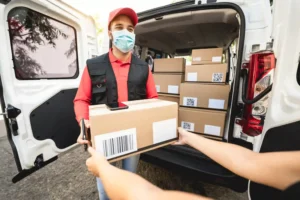If you are tracking your package and see “Shipment Exception,” you might wonder what that means. A Delivery exception is telling you that something unexpected has caused a shipment to be delayed or disrupted and will not arrive on time. A shipment exception does not mean the shipment is lost. A shipment could be delayed due to bad weather, customs processing, or an incorrect address, or may be due to a service disruption. By knowing what a shipment exception means, you can decide to take the appropriate action, like calling customer service or changing information about the delivery, to help ensure the shipment is delivered smoothly and in the expected time frame.
Common Causes of Shipment Exceptions
A shipment exception doesn’t always mean the package is lost, but it usually means there is a temporary delay or something that requires action, or is creating an issue for the package, business, or customer. Recognizing the common reasons for a delivery exception can create an opportunity for the business and customer to prepare ahead of time for something that may happen, create awareness, and take proactive steps to lessen risk in the shipping process.
Incorrect or Incomplete Address
A common source of issues may be incorrect or incomplete shipping addresses. Even a minor thing, such as forgetting to include an apartment number, can result in delayed shipping.
Customs Delays
For international shipments, customs inspections can put packages on hold for an additional check, verifying paperwork, or processing duty payments.
Weather Disruptions
Significant weather events such as storms, floods, or heavy snowfall can cause delays or rescheduling of transportation or delivery.
Damaged or Lost Labels
If a label is torn, smudged, or detached, the carriers may have trouble identifying the package, causing delivery exceptions.
Recipient Unavailable
If a signature is needed and a recipient is not available, delivery could be re-attempted, and an exception notice will be left.
Operational Delays
Problems like vehicle breakdowns, accidents, or congestion of vehicles in the carrier’s system may also lead to shipment exceptions.
Restricted or Prohibited Items
Packages that contain restricted items may be flagged, inspected, or returned, resulting in exceptions.
Once shippers understand what the common causes of shipment exceptions are, they can enhance packaging, verify addresses, and try to avoid these issues. Staying proactive with carriers and customers can also minimize any frustration for all involved and avoid issues that could cause a failed experience.
How To Resolve A Shipment Exception Quickly?
Waiting for an important order but facing a shipment exception is a frustrating experience. Shipment exceptions mean to indicate that something unexpected happened to a package while in transit that could delay delivery. You’ll want to make sure you qualify or verify the reason for the shipment exception so that you can take prompt action. It may be impacted by weather, an error in the shipping address, or customs delay. The sooner the problem is addressed as the package will always traveling, even if it indicates a delay.
Check the tracking details: Review the courier’s tracking page to find out exactly what the reason was for the shipment exception.
Contact the carrier immediately: Either call or email the courier to verify the issue and include any additional information.
Verify the delivery address: Verify the address to ensure that it is accurate, up to date, and easy to find. Incorrect addresses are a common cause of delays in shipments.
Provide required documentation: For international orders, quickly submit customs forms, invoices, or identification when requested.
Request rescheduling or rerouting: If the delivery could not be completed, have the carrier hold the package at the nearest location or redirect it to a new address.
Stay proactive: Keep checking for updates and communicate openly with the carrier through the end of the delivery.
Taking these steps ensures your shipment exception is resolved quickly and your delivery arrives with minimal disruption
Conclusion
Delivery exceptions within the logistics industry are common, but they do not necessarily need to impact your delivery timeline. By stressing the importance of knowing what a shipment exception means, following updates, and proactively communicating to fix problems, you can minimize delays and keep deliveries on schedule
FAQs About Shipment Exceptions
- What does a shipment exception mean?
A shipping exception indicates that an unexpected event occurred during transit that may cause a delay in your delivery. The exceptions could be weather-related, customs hold, or potentially inaccurate delivery information. - Are shipment exceptions always bad?
Not always the case, however. Many exceptions are minor and resolve quickly without delaying your delivery, while others may require action, such as updating an address or contacting the carrier. - How can I fix a shipment exception?
Check your tracking details first. If the carrier needs additional information, provide it as soon as possible. In some cases, you may need to contact customer support to resolve the issue. - How long do shipment exceptions last?
It depends on the reason. Weather delays may resolve within a day, but customs or incorrect address issues can take several days.








